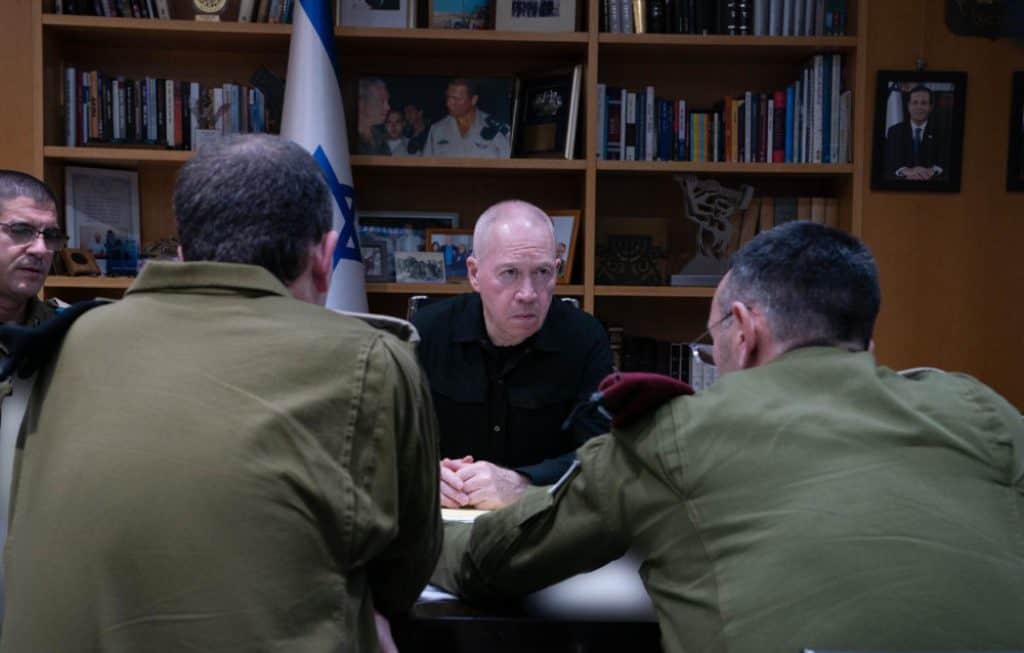
On September 29, several hours before sunset, the Israel Defense Forces (IDF) conducted airstrikes on the port city of Hudaydah in Yemen. The IDF said that dozens of Israeli aircraft were involved in the operation targeting the Iranian-backed Houthis, which took place around 1,200 miles from Israel.
The IDF also said it struck 45 “terror targets belonging to the Hezbollah terrorist organization in the area of Kafra in southern Lebanon” on September 29. This operation built upon days of strikes against Hezbollah in Lebanon that eliminated the Iranian-backed group’s leader, Hassan Nasrallah, and many of its key commanders.
The Israeli strikes on the Houthis in Yemen and Hezbollah in Lebanon illustrate the large area over which the IDF now operates against threats on multiple fronts. Israeli Defense Minister Yoav Gallant has said that Israel is facing a war on seven fronts: Gaza, the West Bank, Yemen, Lebanon, Syria, Iraq, and Iran. Hamas was the first to attack Israel on October 7, 2023, and its attack was soon followed by other Iranian-backed groups, including Hezbollah, which joined the conflict the next day, and the Houthis, who joined several days later.
Each front is different. In Gaza, for instance, the IDF has settled into a routine of controlling two corridors that cross the strip—one in central Gaza and the other along the Egyptian border. Although Hamas continues to try to carry out small attacks, in general, the group appears to have taken such high losses in weapons and fighters that it is not capable of serious offensives. This situation could change, however.
The IDF said on September 29 that it had carried out a precision strike on a Hamas “command and control center embedded inside a compound that previously served as the ‘Umm al-Fahm’ School in the northern Gaza Strip.” Hamas has increasingly sought to move its operations into former school buildings in Gaza, reflected by the number of recent statements in which the IDF has said it struck various Hamas members in these institutions.
The IDF also continued uprooting Hamas tunnels in Gaza, as the 5th Brigade found an underground passage near the Netzarim Corridor. Working with combat engineers, the soldiers mapped the tunnel and blew it up. While it appears combat activity in Gaza is at its least intense level in the last year, this status could change as the anniversary of the October 7 attack nears.
On the Lebanon front, the IDF has carried out a week of airstrikes, including strikes on Beirut designed to eliminate Hezbollah commanders and attacks on Hezbollah sites in southern Lebanon and the Bekaa Valley aiming to diminish the group’s offensive capabilities. There are also reports of strikes in other parts of Lebanon, such as border crossings with Syria.
On September 29, the IDF confirmed that the operation that targeted Nasrallah on September 27 also eliminated a number of Hezbollah commanders. “Ali Karaki, the Commander of Hezbollah’s Southern Front, who was one of the remaining senior commanders in the organization before the strike,” was also killed, the IDF noted in a statement. “More than 20 other terrorists of varying ranks, who were present at the underground headquarters in Beirut located beneath civilian buildings, and were managing Hezbollah’s terrorist operations against the State of Israel, were also eliminated,” the IDF added.
The Iranian-backed Houthis have increased their targeting of Israel with ballistic missiles over the last two weeks. They launched a missile at central Israel on September 15 and followed that up with long-range missile attacks on the Tel Aviv area on September 27 and September 28. In response, the IDF carried out extensive strikes on “military targets belonging to the Houthi terrorist regime in the Ras Isa and Hudaydah areas of Yemen. The targets included power plants and a seaport used to import oil, which were used by the Houthi terrorist regime to transfer Iranian weapons to the region, in addition to military supplies and oil,” the IDF said.
“I visited the Israel Air Force command and control room, where I followed the strike conducted against the Houthi terrorist organization. Our message is clear—for us, no place is too far,” Gallant said in the wake of the operations.
Iranian-backed militias in Iraq also continue to attack Israel. On September 29, an Israeli Sa’ar 4.5 class missile ship in the Red Sea intercepted a UAV that was launched from Iraq.
With the low-intensity fight in Gaza, widespread offensive operations against Hezbollah, and retaliatory strikes against the Houthis in Yemen, Israel’s seven-front war is coming increasingly into focus as the IDF expands operations.







